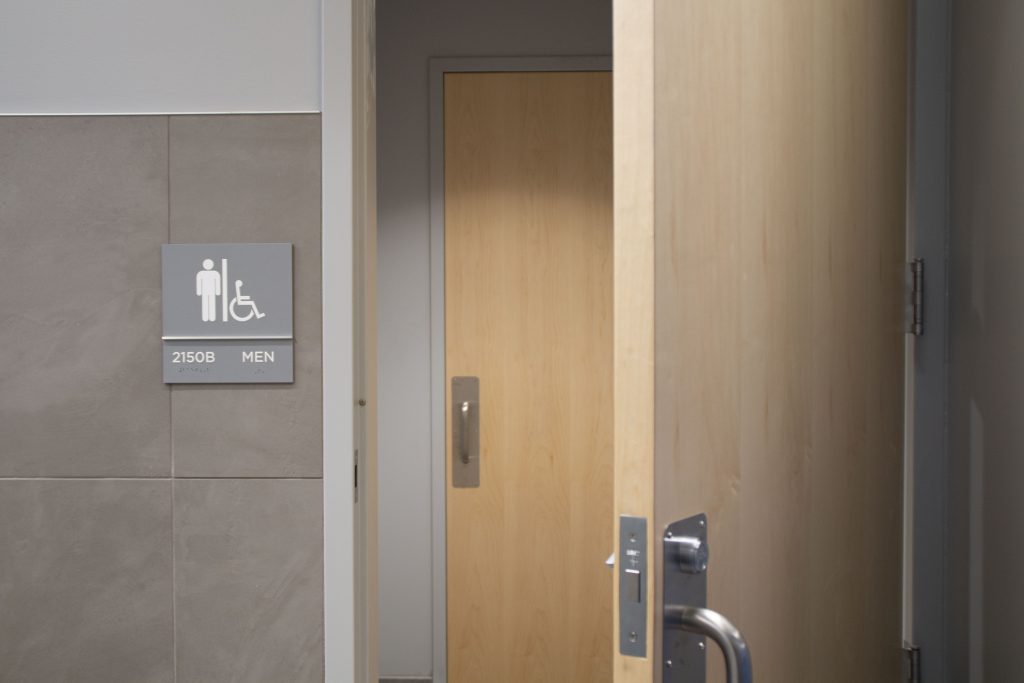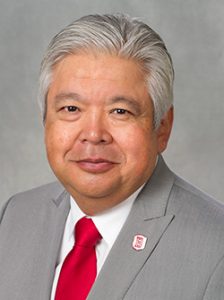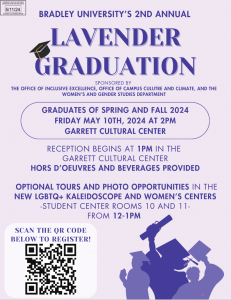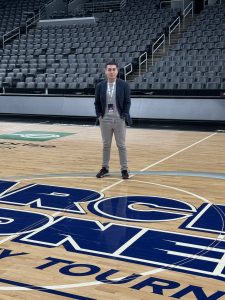
As Bradley promotes its new building as a collaborative space for students and the community, the Business and Engineering Convergence Center is designed to be widely accessible. However, some of the designs could come at a disadvantage.
The convergence center is designed to have a better fire control system than most of the buildings on campus and multilayered access area control. As a result, the building has many sets of corridor doors.
While most of the restrooms are double-doored and located behind corridor doors, the design may have created more barriers.
The building has one gender neutral-restroom on the first floor and nine sets of male and female restrooms throughout all five levels – two sets on each of the four floors, and one set in the basement. Though all of the restrooms are labeled as handicap accessible, eight sets of them are double doored. Accessing the restroom also may require going through some fire doors.
“Typically, with the code requirements, it’s the general idea of removing barriers,” said Kim Green, planning supervisor and sustainability coordinator at Bradley. “The double doors themselves [are] used primarily to minimize the line of the sight into the restrooms.”
There is one set of the single-doored restrooms which are located on the west side, the engineering side, of the first floor; and one single-doored, gender-neutral restroom is located in the northeast corner of the first floor.
“These two over here, for example, actually have a wing wall, so there would only be one door required in order to minimize the sight from the corridor,” Green said, while pointing at the west restrooms on the first floor.
Green said that the double doored design is acceptable under the Americans with Disabilities Act (ADA) code requirements.
“After reviewing some of the concerns about the double doors we went through, we looked at a couple of different things, and I actually worked with our architect on this because they have the responsibility to ensure that all of our codes are met, including ADA,” Green said.
According to Brian Joschko, chief of Bradley police, the corridor doors mainly serve as fire partition doors, some with the dual intents to also serve as security doors with ID access controls for the office areas.
All corridor doors are equipped with magnetic holds to keep them open or release to close shut. Doors with security purposes were originally programmed to shut and are armed overnight between 10 p.m. to 7 a.m. and during the weekend.
According to Joschko, BUPD has stopped on closing these corridor doors after hours since Tuesday as the control mechanisms are not fully in place yet.
As fire doors and marked exits, most of the corridor doors can open from both sides and cannot be permanently locked. But once the doors are closed and armed with alert after hours, visitors will need scan their IDs before pushing open the door to avoid activation of the alert.
“These doors act to secure [the office area]. You’ll have to tap [ID] in order to avoid an alarm being sounded,” Green said. “However, if this building goes into a fire alarm mode, these doors release, it’s no longer a delayed egress to get through them … And when I say locked, it cannot be permanently locked, it’s a delayed [open] … so you push that after hours, it’s going to alarm, but it will allow you to proceed through.”
According to Green, the university adjusted the restroom doors in the building two weeks ago to meet the ADA’s recommendations for doors to be less than five pounds of force to push or pull open and to close in no faster than five seconds.
“We actually have gone through the entire building and made [those] adjustments,” Green said.
One student, who asked to go unnamed, said she has been experiencing temporary mobility challenges since the beginning of this semester and described her issues with accessing some parts of the building, including the restrooms. She also confirmed that the university did make special adjustments to make her experience a little bit better and for other students who may face similar challenges.
“A student may experience a mobility issue on mobility disability, it doesn’t mean it impacts them the same way it impacts another person,” said Elizabeth Gorman, director of Student Access Services. “I’m going to use the example of a person utilizing a wheelchair. So, according to that, are the doors are wide enough? Is there enough room for person to be able to turn?”
According to Gorman, the office of student access services helps over 300 students on average for both long-term or short-term accommodations. Within this number, there are about seven to eight students who experience physical challenges.
“For these seven to eight students, it’s everything to them,” Gorman said. “A lot of people don’t think about that, like you can’t reach a button or independently take yourself to the bathroom.”




